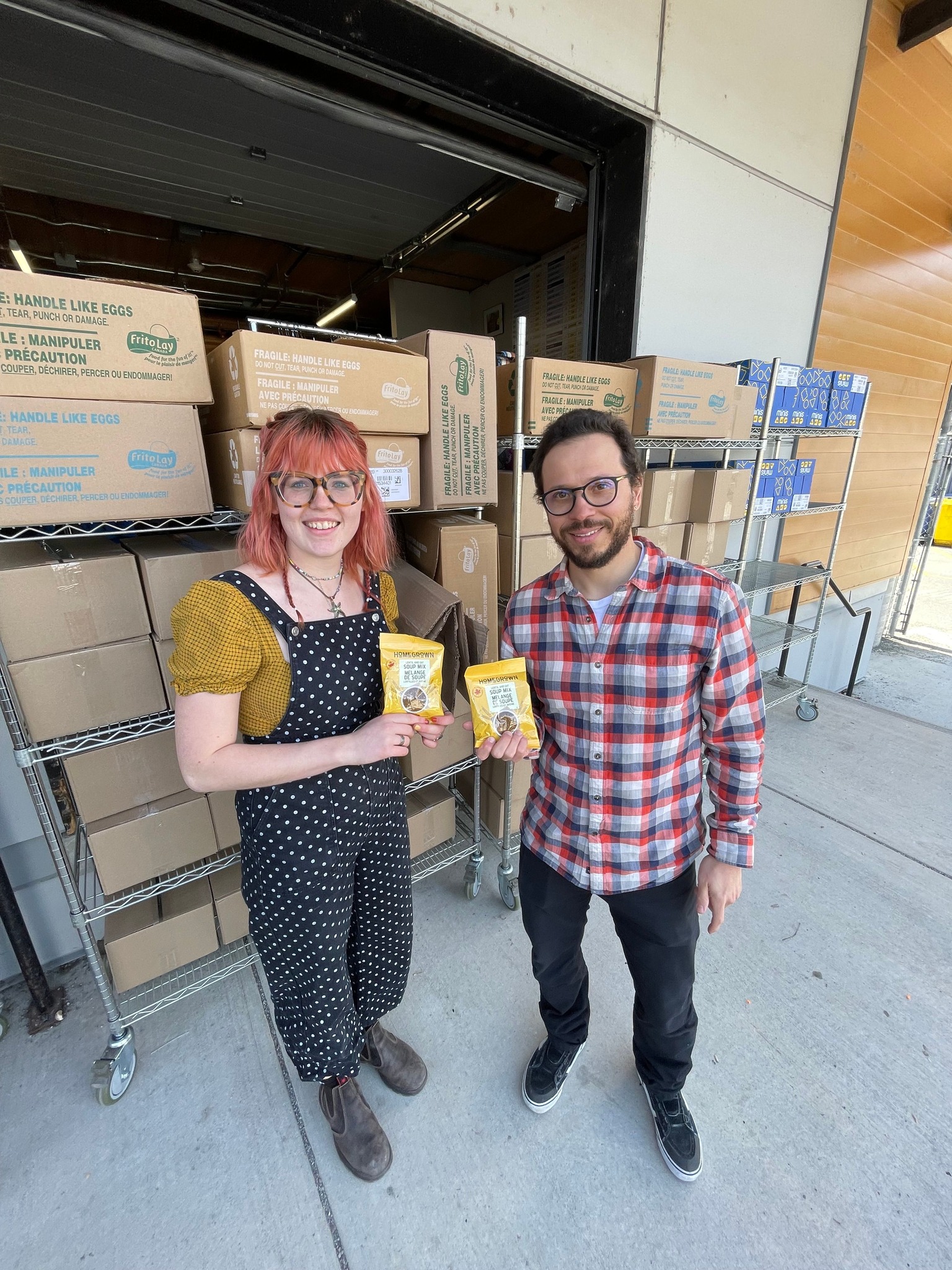In the spring and summer of 2025, a tasty and nourishing soup produced specifically for food banks by Food Banks Canada made its way to hundreds of thousands of people experiencing food insecurity across the country. Full of Canadian-grown pulses and grains, it represents a new chapter in food banking.
Back in 2023, Regina and Saskatoon Food Banks collaborated with the Saskatchewan Food Industry Development Centre to produce a hearty lentil-and-oat soup mix. Based on a recipe developed at the University of Saskatchewan’s College of Agriculture and Bioresources, this dry mix is shelf-stable, vegetarian-friendly, easy to prepare, flavourful and packed with essential nutrients, including protein.
The soup mix got overwhelmingly positive feedback, so Food Banks Canada asked for permission to expand the project by manufacturing and distributing the soup to food banks all across the country.
We arranged to manufacture over 600,000 packets of soup mix, using Canadian crops. Each packet would make a filling meal for two adults or could feed a family of four when accompanied by a side dish. We shared this large batch of soup with the network of food banks for free.
“THANK YOU to Food Banks Canada for making this available to us. Collaborations like this keep local shelves and bellies full! We don’t need to tell you that protein is expensive; items like this are so important!”
– Whistler Community Services Society, Whistler, British Columbia

“I was skeptical about [this soup] at first, thinking it would be dull in flavor. But really, it was tasty!”
“It’s a wonderful soup on its own and adding vegetables to it makes it taste even more delicious.”
–Anonymous feedback submitted via contact information on soup packaging
Unlocking New Food Sources for People in Need
Traditionally, food banks have procured most of their food from private citizens, retailers or food-processing companies. But to keep up with the level of need amidst soaring food costs, we must also move up the supply chain and work with both manufacturers of ingredients and primary food producers such as farms and fisheries.
A lot of product is available to food banks from this sector, some of which would otherwise be lost even though it is of high quality and safe to eat.
However, fresh food has logistical limitations because of its short shelf life. If we can transform some of it into other kinds of food, we can make it easier to store and transport, extend its geographical reach, moderate natural peaks and dips in supply, and in some cases, make it more practical or appealing for food bank clients.
Getting involved in food transformation can also allow food banks to produce some of the specific foods they want, rather than just hope to receive them as donations. This helps to:
Ensure access to options that are compatible with various cultural cuisines, food allergies and dietary needs Various local food banks across the country have been leading the way. Food Banks Canada is amplifying their efforts by scaling them up. In doing so, we are building our expertise and capacity to transform food, which will unlock the potential to share far more of it.
Provide a reliable and predictable stream of products for food bank clients
Increase the supply of foods that are dense in nutrients and/or in high demand
“Our efforts in this area are about giving the power of choice to food banks and their clients,” says Caren Batchelor, FBC’s Manager of Procurement for National Programs. “We’re striving forward with food transformation in an effort to produce nutritious items that are frequently purchased by food banks. The For GOOD Foundation, a wonderful partner of ours, is already supplying several of those products. If you add to that the fact that we’re now getting our own experience with food transformation, we’re well on our way.”